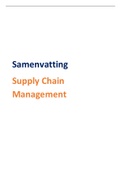Lecture notes
Principles of endocrine control
- Institution
- University Of Exeter (UoEX)
- Book
- Human Physiology
A summary of the notes on the lecture 'Principles of endocrine control', including the role of the hypothalamus, the types of signal transduction and the modes of cell signalling.
[Show more]













